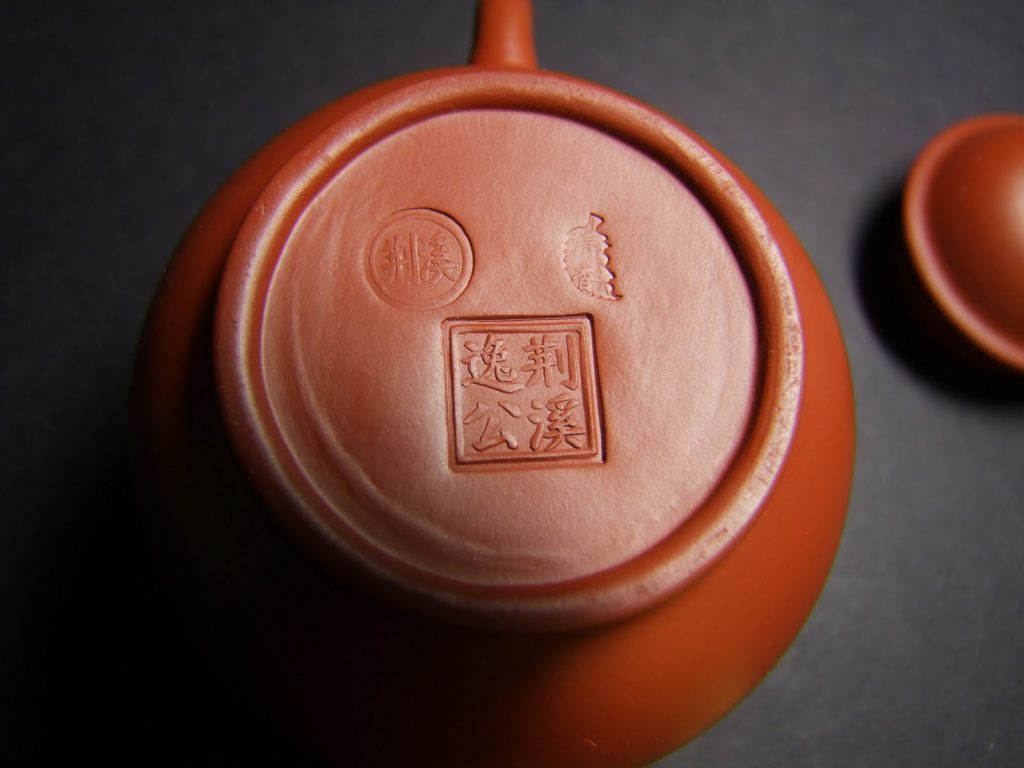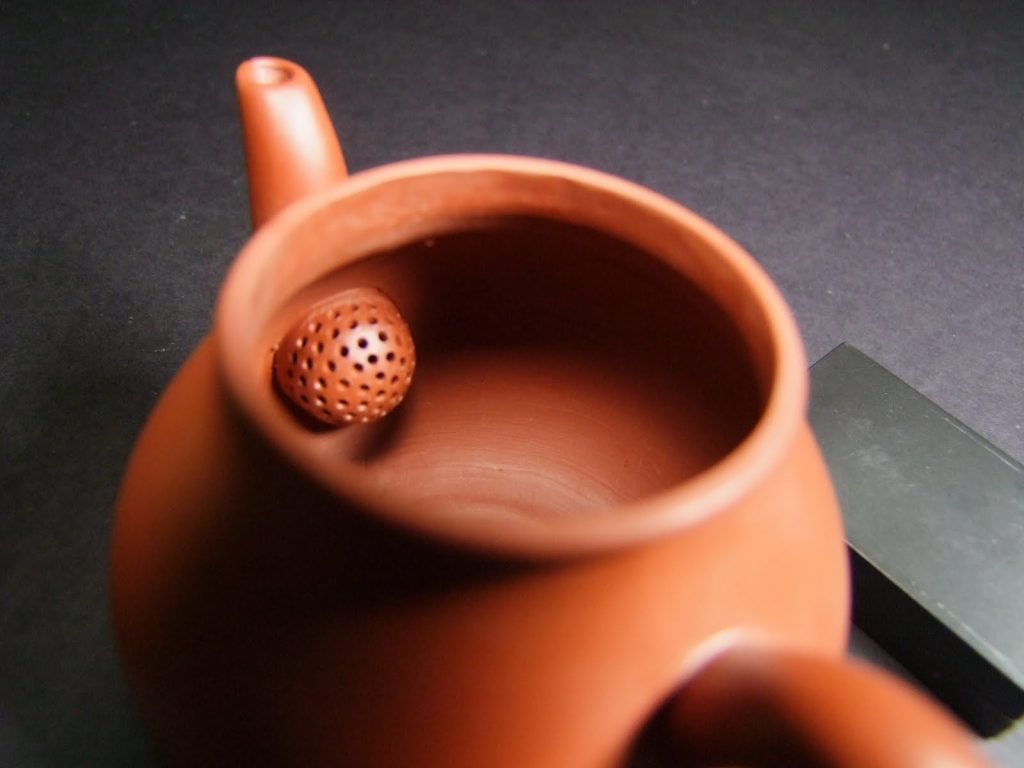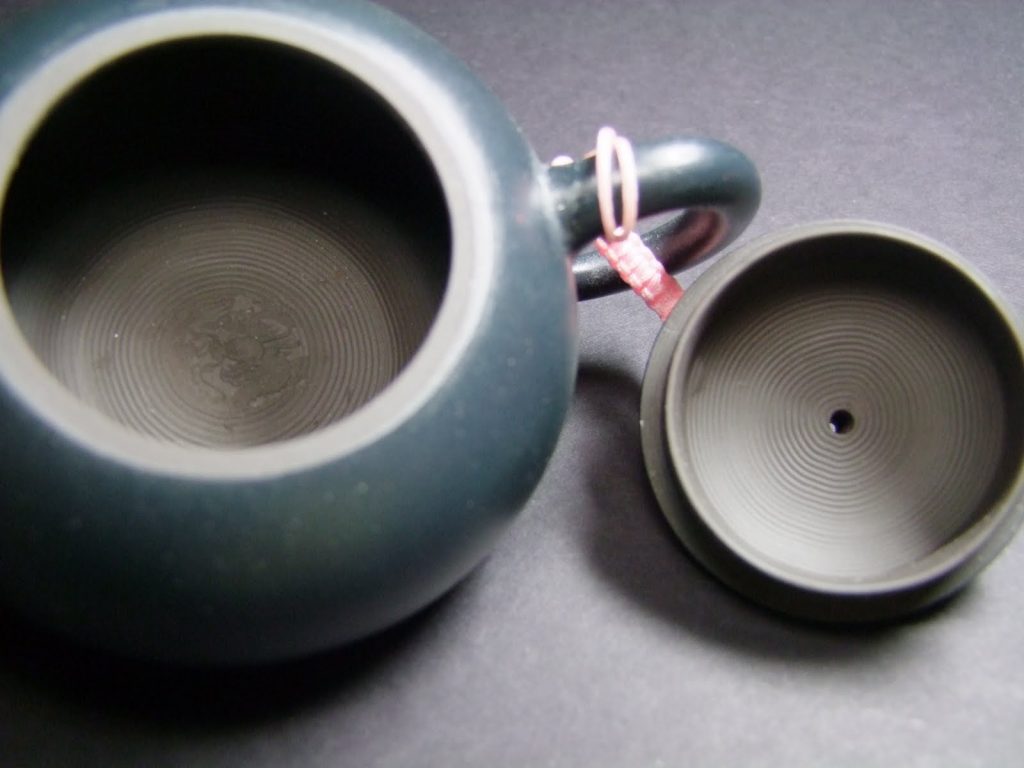There are 13 anatomical parts found on a chinese teapot. In the book “The Way Of Tea” by Lam Kam Chuen, the parts are handle, stand, bottom, belly, beehive or or inner net, mouth, flow, lip or wall, button, air hole, lid, shoulder and buckle. Click pix 1 for an enlarged and readable view of the parts of a teapot. Its really fascinating. You can now go to a teashop, examine a teapot and than exclaim “I like stroking the belly and bottom of this teapot” and wait for a reaction from the teashop owner. Either he will think you are mad or some sex crazed animal.

The traditional chinese clay teapots are usually made from Yixing clay in China. They come in a myraid of colors. Terms like hong ni(red), duan ni(yellow) or hei ni (black) are used to describe the color of the teapots. In addition, these teapots come in various shapes and sizes. The purple hue Yixing is considered the best quality clay for making a teapot. I would recommend a teapot size of between 120-250 ml if you are brewing tgy, pu erh or oolongs. Try if possible to allocate the use of a single teapot to a type of tea as the aroma of a tea (example tgy) may linger on the teapot for some time even when you have washed the teapot.
In a nutshell on making a clay teapot – clay is mined and extracted, the clay is pulverized into a fine powder, powder is sorted and sieved, powder is washed again and left to settle in a tray of fresh water for some time, water is drained and the clay which has settled at the bottom of tray is dried and later cut to brick sizes. When needed, this clay is mixed with water into a paste and moulded into teapots. Handles and spouts are usually moulded separately before they are attached to the body of the teapot. Teapots are then send for baking (called firing) usually at kilns. Once baked, teapot goes thru final touches before its ready.

If you examine a teapot closely, you can usually observe the teapot’s maker seal inscribed at the base of the teapot. You do occasionally see smaller seals on the handle, inside lid and even on the inside of the teapot. The last pix shows additional seals used by the potter.
You will also observe some teapots are glazed while some are not. This glazing, according to my expert teapot collector friends, is more for a visual and aesthetic purpose.

There is usually a ‘built-in’ filter inside your teapot. If you look inside your pot, you can observe a filter at the spout joint. This filter is also known in Chinese as the ‘bee hive’. This filter is useful to prevent the tea leaves from exiting when you pour out your tea. The Japanese teapots sometime have a small metal mesh filter instead. Do keep your filters clean by washing out any tea leaves that is caught in the filter. Exercise some care as not to damage the filter if you are using tools to clean the filter.

The 1st pix shows a ball filter. There are also flat, unobtrusive filters in many teapots. I know many tea drinkers and tea shops use an additional mesh filter (handheld), when they brew their tea. They use this handheld filter prior to pouring out the tea into a pitcher before serving. This is to ensure that your served tea do not contain any tiny tea leaves that is not caught by the teapot filter. I personally do not use the handheld metal filter.I was told that the Chinese teapot develop the use of beehive filters in the manufacture of the teapots only in the past 12-15 years ago. The older teapots do not have a built-in filter (see pix2).
It is interesting that I found this teapot felt lighter for its size.Almost all Chinese teapots (yes, even the very expensive ones) today are made from moulds. Teapot makers make moulds from a teapot and subsequent teapots are made from these moulds. Though you will expect that every production of a teapot production run will be identical in terms of size and shape, there will be small differences when you compare these teapots. This is because there are some hand-work done during the production stage. Spouts and handles are joined by hand. The overall teapot is also hand-finished. You can easily spot this handiwork when you are buying a teapot…..alignment of the handle or spout are some examples. Some teapot makers use a potter’s wheel in the production stages, thus the concentric lines on the inside of the lid and teapot (pix 3&4).
